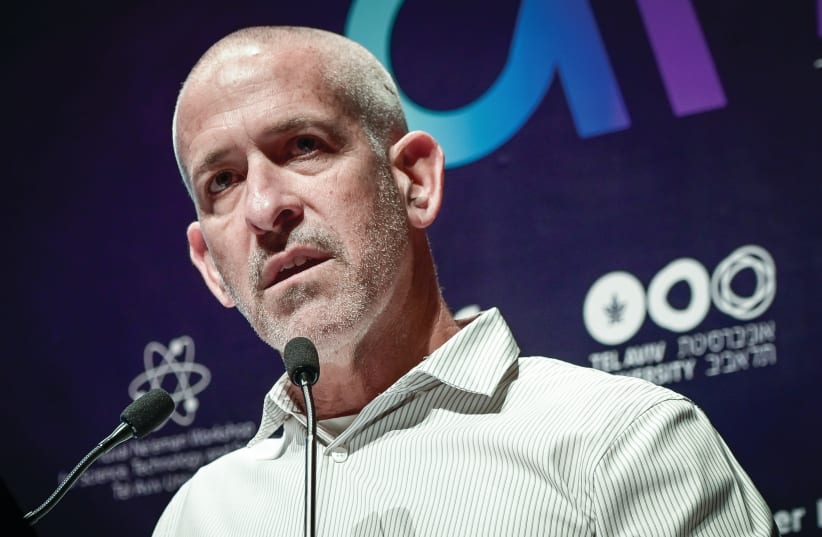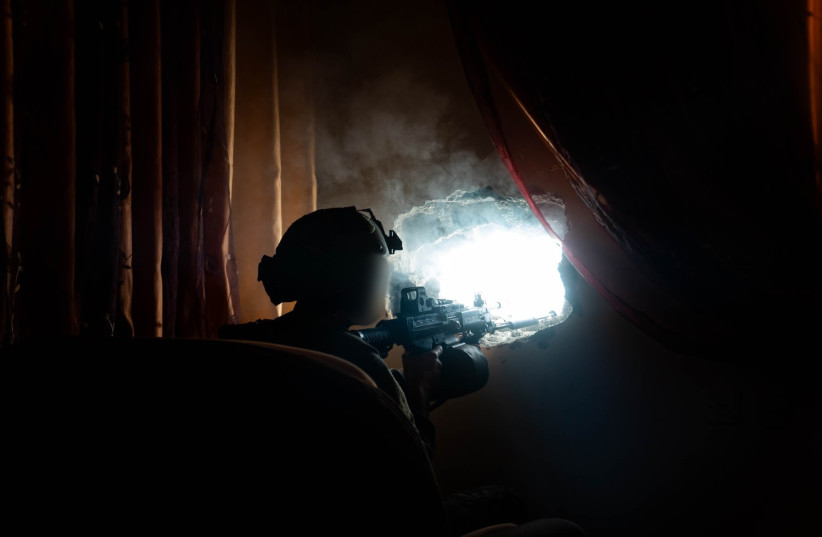On November 30, The Wall Street Journal (WSJ), in what appears to have been a world exclusive, published a detailed report of discussions said to have taken place between US and Israeli officials about possible plans for shortening the war in Gaza.
The report indicates that these official level discussions are following up options suggested by Israel’s political and military leadership of ways to disempower Hamas. One favored approach turns to a precedent set in 1982. At that time, the Palestine Liberation Organization (PLO) under Yasser Arafat had entrenched inside Lebanon, and then-prime minister Ariel Sharon had authorized Israeli forces to invade and advance into the country. In an attempt to dislodge the PLO, Israel was besieging the capital Beirut. The US brokered a deal with Israel under which US, French, and Italian troops entered Beirut and oversaw the departure of Arafat and his organization for a new base in Tunisia.
There is, of course, no question of offering the Hamas leadership the chance to escape with their thousands of followers to some country prepared to accept them. Planners are aware that, though neither Hamas nor the PLO have any qualms about the use of terrorist tactics, the PLO is essentially a secular political organization, while Hamas is a jihadist group inspired by extremist Islamist philosophy. Hamas, unlike the PLO, would not respond favorably to a deal involving expulsion from what they consider their land.
The idea under consideration is to capture and expel thousands of lower-level Hamas fighters from the Gaza Strip, thus cutting away Hamas’s power base – namely the tens of thousands of Hamas fighters it controls. If achieved, this would undoubtedly contribute to the collapse of Hamas and shorten the war. It would also prevent the group from ever retaking power, thus enabling Gaza to become governable in the future.
The process may have started. In a statement released on December 11, the IDF announced: “More than 500 Hamas and Islamic Jihad terrorists have been apprehended by the IDF and Shin Bet (Israel Security Agency) over the past month and transferred for further questioning.”
Report of a Munich-type operation confirmed by Shin Bet chief
As for the Hamas leadership, the WSJ had yet another revelation up its sleeve. On December 1, it asserted that, according to Israeli officials, the intelligence services were preparing a covert operation akin to that following the Munich Olympics massacre in 1972.
The report was later confirmed by Shin Bet chief Ronen Bar in a domestic broadcast on December 3. Those leaders of the Hamas organization responsible for planning, organizing, and perpetrating the invasion and pogrom of October 7, he said, would be hunted down and eliminated, even if it took years, and no matter where they were living or wherever they might choose to settle after their defeat.
THE WSJ, citing unnamed senior Israeli and US officials, says another option floated by the Israel Defense Forces, is to form a “Gaza Restoration Authority” backed by Saudi Arabia and the United Arab Emirates, tasked with rebuilding a Hamas-free Gaza.
A major obstacle to this plan, the report says, is a fundamental disagreement between Israel and the US about whether the Palestinian Authority (PA) would, or should, be part of such a solution. US Secretary of State Antony Blinken, and a number of Washington spokespersons, have said repeatedly that the settled US vision of the post-war future is the unification of the governance of Gaza and the West Bank under the PA, leading to peace negotiations with a two-state solution as their goal.
This unchanged US view was repeated by Vice President Kamala Harris, speaking at the COP28 summit in Dubai on December 2. Post-war reconstruction efforts in Gaza, she said, must be undertaken “in the context of a clear political horizon for the Palestinian people toward a state of their own, led by a revitalized Palestinian Authority… ”
Netanyahu, however, has made it clear that Israel would not agree to allow the PA, as presently constituted, to have any part in the future governance of Gaza. On December 12, after a conversation with US President Joe Biden, he virtually rejected the US aspiration of an eventual two-state solution. He would not allow Gaza, he said, to be ruled by those who “teach, support, or fund terrorism,” thereby ruling out both Hamas and the Fatah-run PA.
Biden sees the right-wing elements in Netanyahu’s government behind this. In a speech on December 12, he is reported as saying that Netanyahu “has to change this government,” adding that Israel ultimately “can’t say no” to a Palestinian state.
A problem given little emphasis so far in the media is that, in addition to Hamas, other groups, such as Palestinian Islamic Jihad (PIJ), control thousands of gunmen who not only took part in the October 7 atrocities but are also holding hostages. On November 27, CNN, based on a highly-placed diplomatic source, reported that more than 40 hostages taken from Israel into Gaza on October 7 are not currently in the custody of Hamas, but were being held by PIJ or other unidentified groups or individuals. If accurate, this report complicates not only any future truce agreement, but also the wider issue of what an Israeli victory in the Gaza Strip might mean.
On November 28, the armed wing of PIJ, the Al-Quds Brigades, said that it had handed over “some civilian detainees” as part of an exchange with Israel. And indeed, together with Hamas gunmen, fighters from PIJ were seen handing over 17-year-old Mia Leimberg. This was the first time that PIJ, or any other party, had publicly acknowledged being involved in negotiations.
As regards future truce agreements, the terms have so far required Hamas to hand over hostages in exchange for Palestinian prisoners held by Israel. They depend on Hamas actually holding the hostages to fulfill their part of the agreement. If Hamas does not, and cannot persuade other groups to participate in any future deal, the only recourse left to Israel would be to locate the hostages themselves by achieving a complete victory over opposing forces in the Strip. Subsequently, Israel would have to treat all militant groups and their leaders exactly as how they plan to deal with Hamas and its leadership.
Whichever way they look, the future for Hamas, its allies, and their leaders seems bleak. Perhaps on October 7, they bit off rather more than they could chew.
The writer is the Middle East correspondent for Eurasia Review. His latest book is: Trump and the Holy Land: 2016-2020. Follow him at: www.a-mid-east-journal.blogspot.com.

